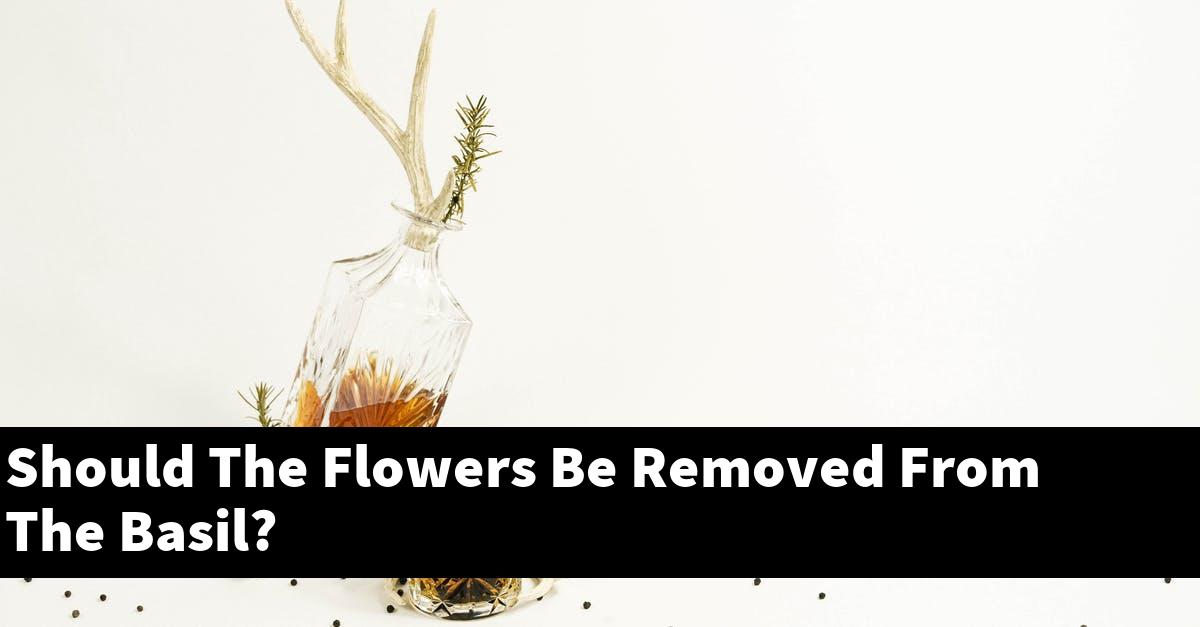Basil is a popular herb that is used in many cuisines around the world. The flowers of the basil plant are often removed before the herb is used, as they can be bitter.
Some people believe that the flowers should be left on the plant, as they are edible and contain nutrients that can benefit the body.
Should basil flowers be pinched back when planting?
Basil is a hardy annual herb that can be grown in a variety of soil types, including clay and loam. Basil needs well-drained soil and will perform best in a sunny location.
Basil grows best when pinched back after germination to prevent the plant from producing too many flowers.
Should you cut the flowers off of basil plants?
There is no one right answer to this question, as it depends on the specific basil plant and your individual gardening goals. Some people prefer basil plants that are less bushy, while others may prefer them to be more densely packed.
Chopping off the flowers may help to achieve either goal. Additionally, some people believe that cutting the basil plant’s flower buds will help to promote new growth and healthier plants.
Ultimately, the decision about whether or not to cut the flowers off of basil plants is up to the individual gardener.
Should i remove flowers from basil plant?
Flowers can add beauty and color to a basil plant, but they can also take away from the plant’s overall health. If the basil plant is receiving too much attention from the flowers, it may not be getting the sunlight and water it needs to survive.
Removing the flowers from a basil plant will help to ensure that the plant is getting the necessary sunlight and water.
What does it mean when basil flowers keep growing?
Basil flowers may continue to grow for a few reasons. First, the plant may have more energy and nutrients than it needs, and so it is storing the excess in the flowers.
Second, the flowers may be sending out new shoots and roots to find more nutrients. Finally, the plant may be responding to some kind of stimulus, like higher light levels or a change in temperature.
Does basil die after flowering?
Basil is a perennial that can live for several years. After basil flowers, the plant will go into dormancy.
During dormancy, the plant will not produce new flowers or leaves, but will continue to grow roots and store energy. After the plant finishes storing energy, it will start to grow new leaves and flowers again.
Are flowers bad on basil?
It largely depends on the individual’s personal preferences. Some people may find flowers to be overpowering or even unpleasant when used on basil, while others may find them to be a beautiful addition.
Ultimately, it is up to the individual to decide what they think works best with their specific basil recipe.
Can you use basil flowers in pesto?
Basil is a popular herb used in pesto. The herb contains thymol, which has anti-fungal and anti-bacterial properties.
When mixed with other ingredients, basil can help to suppress the growth of bacteria and fungi. Some people also believe that basil may have anti-cancer properties.
How to grow basil from flowers?
Basil is a herbaceous plant that can be grown from flowers. To grow basil from flowers, the plant needs to be propagated from existing plants.
The easiest way to propagate basil is by cloning. To clone basil, you will need a rooting hormone, a stem cutting, and a stem that has at least two leaves.
To root the stem cutting, dip it in rooting hormone and place it in a pot of water. After 10 minutes, remove the stem cutting and place it in a pot of fresh soil.
Basil plants can take up to two months to root.
Once the stem cutting has rooted, remove the original basil plant from the pot and cut off the roots. Cut the stem of the new basil plant to the same height as the original plant and place it in the pot.
Water the plant and wait until the new basil plant has roots.
What do you do with basil after it blooms?
Basil is a hardy perennial herb that can be used in a variety of dishes. After the flowers have faded, the basil can be used in pesto, soups, stews, and salads.
Summary
The flowers should be removed from the basil as they can take away from the flavor of the leaves.

